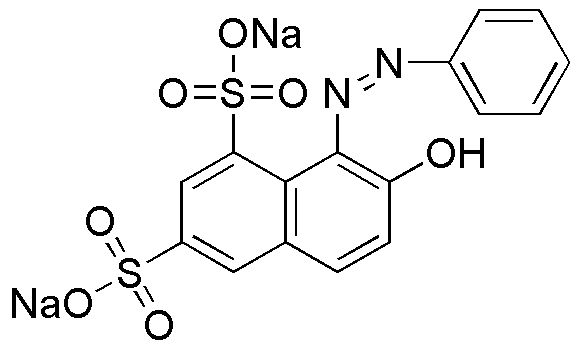Orange G Certified is widely utilized in research focused on:
- Textile Industry: It serves as a dye for coloring fabrics, providing vibrant hues and excellent colorfastness, which is essential for maintaining the quality of textiles.
- Biological Staining: In laboratories, it is used as a staining agent in histology and microbiology, helping researchers visualize cellular structures under a microscope.
- Food Industry: This compound is employed as a food coloring agent, enhancing the visual appeal of various products while adhering to safety regulations.
- Cosmetics: It finds application in cosmetic formulations, providing color to products like lipsticks and eyeshadows, ensuring they meet consumer aesthetic preferences.
- Analytical Chemistry: Orange G Certified is used in various analytical techniques, including spectrophotometry, to quantify substances in complex mixtures, aiding in quality control processes.
General Information
Properties
Safety and Regulations
Applications
Orange G Certified is widely utilized in research focused on:
- Textile Industry: It serves as a dye for coloring fabrics, providing vibrant hues and excellent colorfastness, which is essential for maintaining the quality of textiles.
- Biological Staining: In laboratories, it is used as a staining agent in histology and microbiology, helping researchers visualize cellular structures under a microscope.
- Food Industry: This compound is employed as a food coloring agent, enhancing the visual appeal of various products while adhering to safety regulations.
- Cosmetics: It finds application in cosmetic formulations, providing color to products like lipsticks and eyeshadows, ensuring they meet consumer aesthetic preferences.
- Analytical Chemistry: Orange G Certified is used in various analytical techniques, including spectrophotometry, to quantify substances in complex mixtures, aiding in quality control processes.
Documents
Safety Data Sheets (SDS)
The SDS provides comprehensive safety information on handling, storage, and disposal of the product.
Product Specification (PS)
The PS provides a comprehensive breakdown of the product’s properties, including chemical composition, physical state, purity, and storage requirements. It also details acceptable quality ranges and the product's intended applications.
Certificates of Analysis (COA)
Search for Certificates of Analysis (COA) by entering the products Lot Number. Lot and Batch Numbers can be found on a product’s label following the words ‘Lot’ or ‘Batch’.
Numéro de catalogue
Numéro de lot/série
Certificates Of Origin (COO)
This COO confirms the country where the product was manufactured, and also details the materials and components used in it and whether it is derived from natural, synthetic, or other specific sources. This certificate may be required for customs, trade, and regulatory compliance.
Numéro de catalogue
Numéro de lot/série
Safety Data Sheets (SDS)
The SDS provides comprehensive safety information on handling, storage, and disposal of the product.
DownloadProduct Specification (PS)
The PS provides a comprehensive breakdown of the product’s properties, including chemical composition, physical state, purity, and storage requirements. It also details acceptable quality ranges and the product's intended applications.
DownloadCertificates of Analysis (COA)
Search for Certificates of Analysis (COA) by entering the products Lot Number. Lot and Batch Numbers can be found on a product’s label following the words ‘Lot’ or ‘Batch’.
Numéro de catalogue
Numéro de lot/série
Certificates Of Origin (COO)
This COO confirms the country where the product was manufactured, and also details the materials and components used in it and whether it is derived from natural, synthetic, or other specific sources. This certificate may be required for customs, trade, and regulatory compliance.


